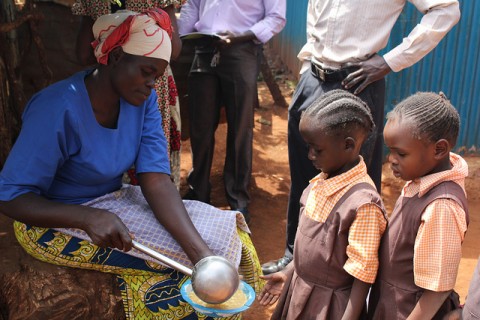2025 Year in Review
In 2025, science, innovation, and collaboration came together to deliver real impact for people and…
Originally published in Farming First. Part of Farming First’s #SDG2countdown on SDG2.2: ending malnutrition, featuring three projects on the frontline of the battle against stunting
Stunting continues to be one of the most pernicious and widespread forms of malnutrition, having a disproportionate impact on the most vulnerable populations compared with other types of malnourishment. According to 2016 data, 155 million children under five around the world are stunted, representing more than 20 per cent of the under-five population. The majority of stunted children are in Asia (87 million) and in Africa (59 million).
Resulting from insufficient food and nutrients, stunting has significant consequences for human health as well as social and economic development. The effects last a lifetime, ranging from impaired brain development, lower IQ, weakened immune systems, and greater risk of serious diseases like diabetes and cancer later in life. Beyond the devastating personal impacts, stunting is also an enormous drain on economic productivity and growth. Economists estimate that it can reduce a country’s GDP by as much as 12 per cent.
Although stunting is almost always irreversible, it can be prevented by improving nutrition in the first 1,000 days of life. The SDGs identified childhood malnutrition, in particular stunting and wasting, as key targets. In addition, the World Health Assembly established a target to reduce by 40 per cent the number of children under-five who are stunted by 2025.
Yet according to estimates recently released by WHO, UNICEF and the World Bank, malnutrition rates around the world remain alarming, and stunting is declining too slowly while the number of overweight children continues to rise. Africa and Asia bear the greatest share of all forms of malnutrition.
This is why stunting, as a key limiting factor in growth and human development, should continue to be a top priority for global initiatives aimed at decreasing the prevalence of malnutrition.
In 2016, the Private Sector Mechanism (PSM) to the UN Committee on World Food Security (CFS) organized a Partnership Forum on Nutrition. During the Forum, we heard of three projects on the frontline of the battle against stunting.

Sustainability in School Nutrition Programmes
According to the World Food Programme (WFP)’s State of School Feeding study, 368 million children in 169 countries benefit from school feeding programs worldwide. The return on investment is substantial – for every $1 spent by governments and donors, WFP estimates at least $3 is gained in economic returns. However, in low-income countries, the proportion of primary school children beneficiaries is just 18 per cent, while in lower-middle-income countries that figure is 49 per cent.
The Tetra Laval Group has a long experience in engaging in public-private partnerships to develop school milk programs linked to local agricultural development. In 2015, more than 70 million children benefitted from locally sourced, fortified milk at school, providing positive health outcomes for children involved.
Swapping Cereals for Pulses: Improving Dietary Diversity in Ethiopia
Pulse crops, in combination with cereals, hold great promise in terms of meeting nutritional requirements for protein, energy, and some important micronutrients such as iron and zinc. As the second most important crop type in terms of annual production, they are important components of the Ethiopian diet.
However, there is a lack of evidence documenting the nutritional benefits of production and consumption of pulses. Responding to this gap, the University of Saskatchewan has identified barriers to, and implemented education programs on, production and consumption of pulses as a means of not only helping diversify the diet, but also to generate household income that could be used to purchase other nutritious foods. So far, the findings have been encouraging in terms of improving nutrition literacy, linking pulse agriculture to improving dietary diversity, and reinvesting income from pulses to meet household needs and to adopt new agricultural practices.
Putting dietary diversity on the plate in Zambia
Bioversity International has been engaged in a three-year “whole diet – whole year” initiative in the Barotse floodplain, Zambia, supported by the CGIAR Research Program Aquatic Agricultural Systems (AAS), and Agriculture for Nutrition and Health.
Rather than focusing on a single nutrition problem, such as vitamin A deficiency, it considers that an individual or household can have many nutritional problems at the same time – for example, lacking more than one essential micronutrient, over-consumption of high-energy staples, or a combination of both. And these problems can vary at different times of the year, or at different times in a person’s life, such as during pregnancy.
Bioversity are using these findings to develop a combination of agriculture and nutrition interventions. These include:
Key messages were shared via cooking demonstrations on enhanced recipes with local cooking groups, where community members gained new knowledge on how to prepare nutritious porridge, for example by adding dried pounded vegetables to maize meal and adding cow pea and groundnut to enrich local dishes.
For more success stories on SDG2.2: ending malnutrition, visit www.farmingfirst.org/SDGs or search #Ag4SDGs on Twitter.
Featured image: Rachel Nduku, The Commonwealth